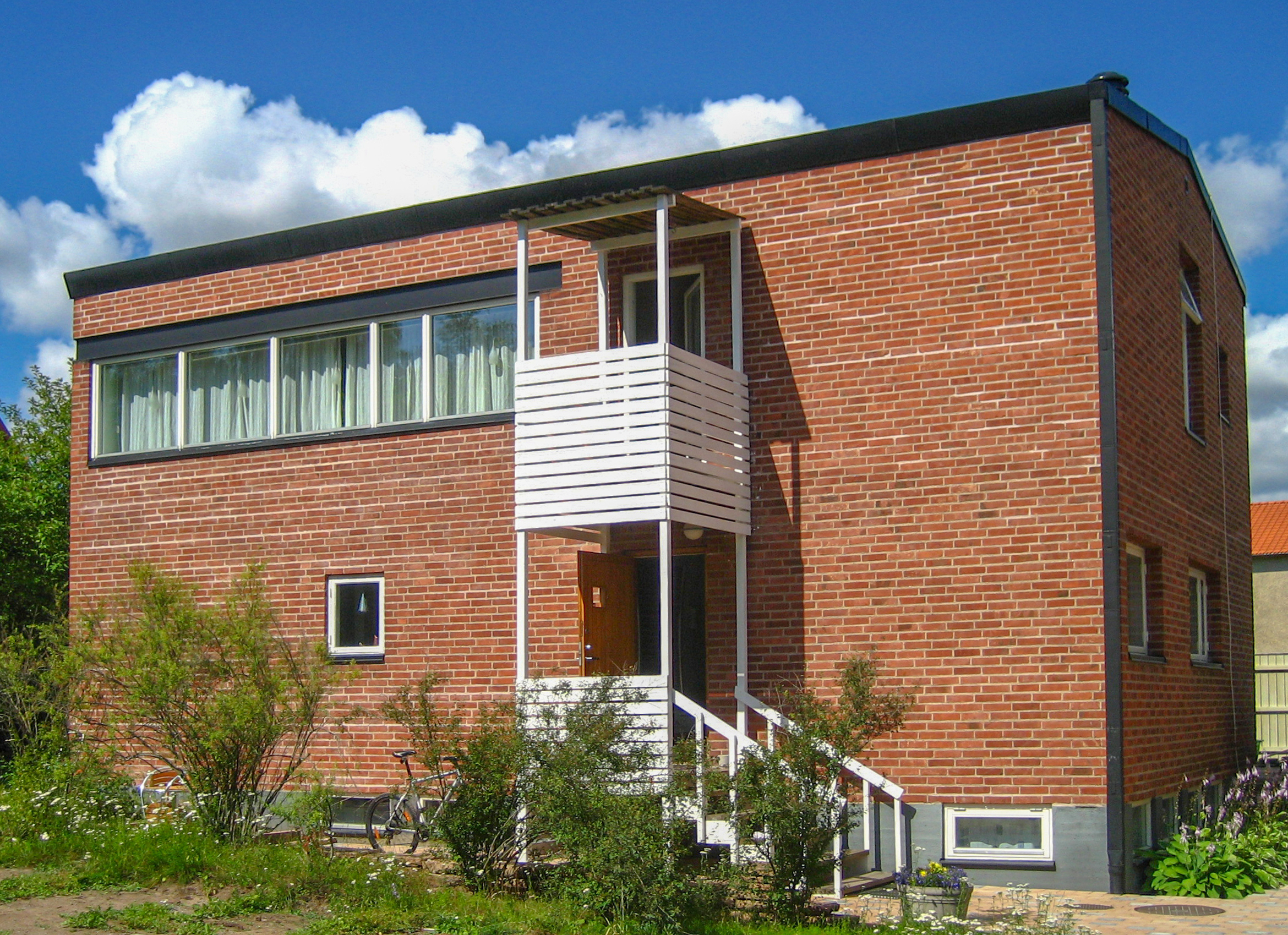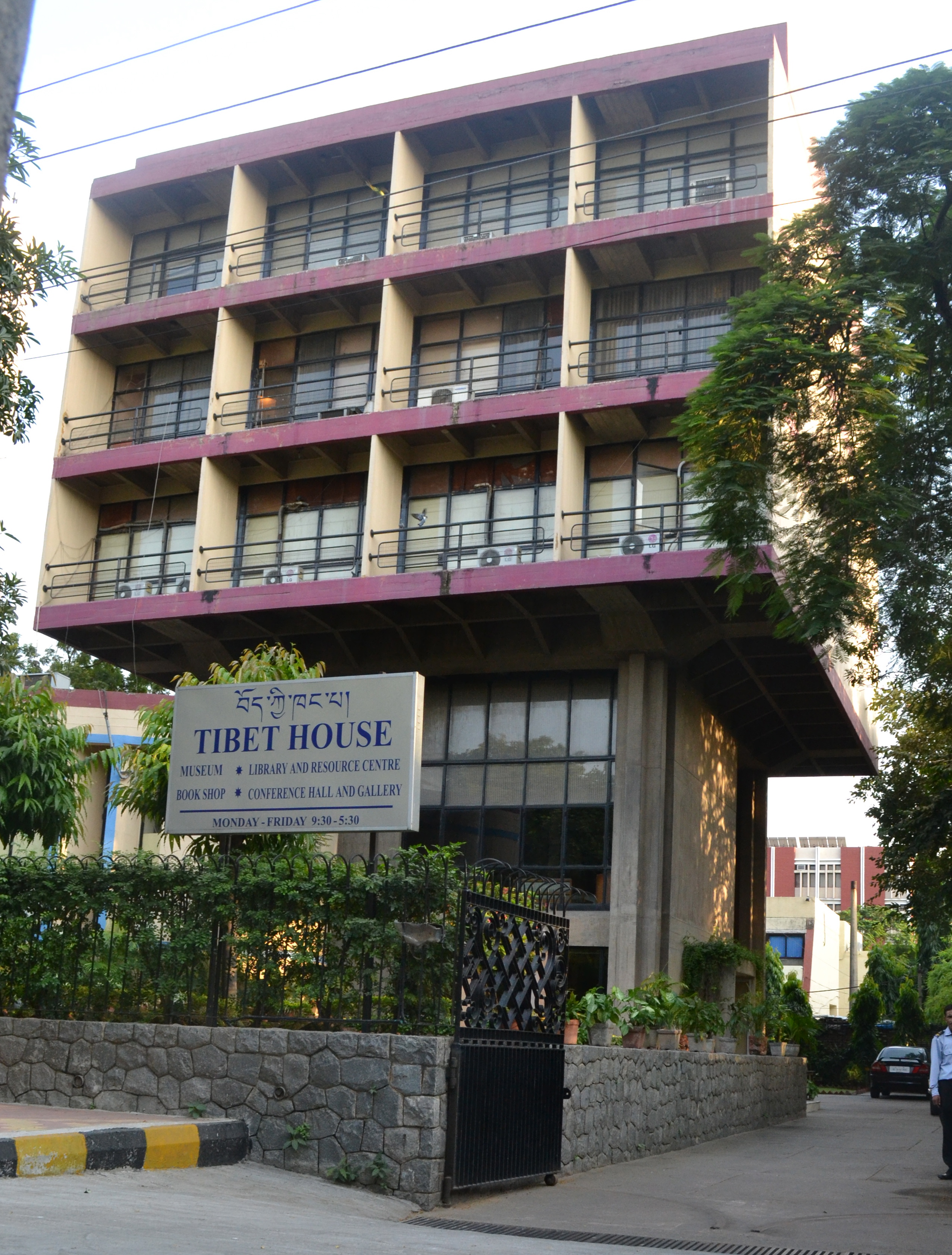|
Shiv Nath Prasad
Shiv Nath Prasad (born 1922) was an Indian architect and urban planner known for his Brutalist architecture designs. He was also called the "Le Corbusier of India". Biography Shiv Nath was born in Varanasi, British India in 1922. His work is influenced by Le Corbusier, even though it is not completely clear if the two have ever worked together or not. His works include the Akbar Hotel in Chanakyapuri, New Delhi, which was constructed between 1965–69 with Mahendra Raj for the India Tourism Development Corporation. It has elements of Le Corbusier's ''Unité d'habitation''. The Shri Ram Centre for Performing Arts was constructed from 1966–69 and Tibet House in 1970. See also * Jugal Kishore Choudhury Jugal Kishore Choudhury (1918 in Goalpara, Assam - 1998) was an Indian architect and urban planner known for his concrete architectural designs. Biography He studied at the Sir J. J. School of Art in Bombay. He then continued his studies in ... * Kuldip Singh (arch ... [...More Info...] [...Related Items...] OR: [Wikipedia] [Google] [Baidu] |
Architect
An architect is a person who plans, designs and oversees the construction of buildings. To practice architecture means to provide services in connection with the design of buildings and the space within the site surrounding the buildings that have human occupancy or use as their principal purpose. Etymologically, the term architect derives from the Latin ''architectus'', which derives from the Greek (''arkhi-'', chief + ''tekton'', builder), i.e., chief builder. The professional requirements for architects vary from place to place. An architect's decisions affect public safety, and thus the architect must undergo specialized training consisting of advanced education and a ''practicum'' (or internship) for practical experience to earn a Occupational licensing, license to practice architecture. Practical, technical, and academic requirements for becoming an architect vary by jurisdiction, though the formal study of architecture in academic institutions has played a pivotal role in ... [...More Info...] [...Related Items...] OR: [Wikipedia] [Google] [Baidu] |
India Tourism Development Corporation
The India Tourism Development Corporation (ITDC) is a hospitality, retail and education company owned by Government of India, under Ministry of Tourism. Established in 1966, it owns over 17 properties under the Ashok Group of Hotels brand, across India. One of the hotels the government developed was the Akbar Hotel in Chanakyapuri, which was built from 1965-69. It remained a hotel until the mid-1980's when it was converted into office space. There were plans in 2007 to convert it back into a hotel in time for the 2010 Commonwealth Games. List of properties Properties that are operated by the ITDC in 2022 were: * Ashok Hotel * Hotel Samrat * Kalinga Ashok * Pondicherry Ashok In 2011 ITDC owned hotels were: * Hotel Patliputra Ashok, Patna, Bihar * The Ashok, New Delhi, Delhi * Samrat Hotel, New Delhi, Delhi * Janpath Hotel, New Delhi, Delhi * Hotel Jammu Ashok, Jammu, J&K * Lalitha Mahal Palace Hotel, Mysore, Karnataka * Hotel Kalinga Ashok, Bhubaneswar, Orissa * Hotel Jai ... [...More Info...] [...Related Items...] OR: [Wikipedia] [Google] [Baidu] |
Indian Urban Planners
Indian or Indians may refer to: Peoples South Asia * Indian people, people of Indian nationality, or people who have an Indian ancestor ** Non-resident Indian, a citizen of India who has temporarily emigrated to another country * South Asian ethnic groups, referring to people of the Indian subcontinent, as well as the greater South Asia region prior to the 1947 partition of India * Anglo-Indians, people with mixed Indian and British ancestry, or people of British descent born or living in the Indian subcontinent * East Indians, a Christian community in India Europe * British Indians, British people of Indian origin The Americas * Indo-Canadians, Canadian people of Indian origin * Indian Americans, American people of Indian origin * Indigenous peoples of the Americas, the pre-Columbian inhabitants of the Americas and their descendants ** Plains Indians, the common name for the Native Americans who lived on the Great Plains of North America ** Native Americans in the U ... [...More Info...] [...Related Items...] OR: [Wikipedia] [Google] [Baidu] |
Brutalist Architects
Brutalist architecture is an architectural style that emerged during the 1950s in the United Kingdom, among the reconstruction projects of the post-war era. Brutalist buildings are characterised by minimalist constructions that showcase the bare building materials and structural elements over decorative design. The style commonly makes use of exposed, unpainted concrete or brick, angular geometric shapes and a predominantly monochrome colour palette; other materials, such as steel, timber, and glass, are also featured. Descending from the modernist movement, Brutalism is said to be a reaction against the nostalgia of architecture in the 1940s. Derived from the Swedish phrase ''nybrutalism,'' the term "New Brutalism" was first used by British architects Alison and Peter Smithson for their pioneering approach to design. The style was further popularised in a 1955 essay by architectural critic Reyner Banham, who also associated the movement with the French phrases '' béton brut' ... [...More Info...] [...Related Items...] OR: [Wikipedia] [Google] [Baidu] |
Kuldip Singh (architect)
Kuldip Singh (1934 – 10 November 2020) was an Indian architect and urban planner known for his brutalist architecture designs. Biography Singh was born in Simla in 1934. He received the Bachelor of Architecture degree from the Delhi Polytechnic School in 1951. He was one of many young architects who worked on the Chandigarh Capitol Complex. He designed the National Cooperative Development Corporation building, and the Palika Kendra for the New Delhi Municipal Council. See also * Jugal Kishore Choudhury * Shiv Nath Prasad * Mahendra Raj Mahendra Raj (19248 May 2022) was an Indian structural engineer and designer who contributed to structural design of many buildings in India including the Hall of Nations at the Pragati Maidan in Delhi and the Salar Jung Museum in Hyderabad. Raj ... References External links 20th-century Indian architects 1934 births 2020 deaths Brutalist architects Indian urban planners People from Shimla {{India-architect-stub ... [...More Info...] [...Related Items...] OR: [Wikipedia] [Google] [Baidu] |
Jugal Kishore Choudhury
Jugal Kishore Choudhury (1918 in Goalpara, Assam - 1998) was an Indian architect and urban planner known for his concrete architectural designs. Biography He studied at the Sir J. J. School of Art in Bombay. He then continued his studies in England at London University. After that he moved to the United States and worked in New York for renowned architect Antonin Raymond. He was associated with renowned architects like Le Corbusier and Pierre Jeanneret during they worked in Chandigarh. He designed the Punjab Engineering College main campus buildings in the 1950's and the IIT Delhi main building and Department of Mathematics auditorium in the 1960's. Awards and honours The Government of India awarded the fourth highest Indian civilian honour of Padma Shri in 1977. He is a recipient of the Baburao Mhatre Gold Medal from the Indian Institute of Architects, which he received in 1994. Dalmia Cements, a part of Dalmia Group, has established a forum, ''Padmashree Jugal Kisho ... [...More Info...] [...Related Items...] OR: [Wikipedia] [Google] [Baidu] |
Tibet House
Tibet House is an international, loosely affiliated group of nonprofit, cultural preservation organizations founded at the request of the Dalai Lama, to preserve, present, and protect Tibet's ancient traditions of philosophy, mind science, art, and culture due to the Chinese invasion of Tibet in 1950 and subsequent Tibetan diaspora. The first Tibet House was founded in New Delhi, India in 1965. Tibet Houses include: Tibet House in New Delhi, India founded in 1965. Tulkus Gelek Rimpoche and Dagyab Kyabgoen Rinpoche were early directors. Geshe Lhakdor was a translator and research assistant from 1986 to 1989. The house was designed by Shiv Nath Prasad in 1970 in the Brutalist architecture style. The current director is Geshe Dorjee Damdul. * Tibet House Japan, founded in 1975 in Shinjuku, Tokyo. * Tibet House US was founded in 1987 by scholar Robert Thurman, actor Richard Gere and composer Philip Glass in downtown Manhattan, New York City. Menla, a retreat space located in the ... [...More Info...] [...Related Items...] OR: [Wikipedia] [Google] [Baidu] |
Unité D'habitation
{{Infobox company , name = Moldtelecom , logo = , type = JSC , foundation = 1 April 1993 , location = Chişinău, Moldova , key_people = Alexandru Ciubuc CEO interim , num_employees = 2,750 employees As of 2019 , industry = Telecommunications , products = Fixed-line telephony, Internet services, IPTV, Mobile telephony Mobile telephony is the provision of telephone services to phones which may move around freely rather than stay fixed in one location. Telephony is supposed to specifically point to a voice-only service or connection, though sometimes the li ... , homepage = https://www.moldtelecom.md Moldtelecom is the national telecommunications operator and also the largest telecommunications company in the Republic of Moldova. On 1 April 1993, following the restructuring of the telecommunications sector in the Republic of Moldova, ‘Moldtelecom’ State-Owned Enterprise was established. On 5 January 1999, the company has been reorganized and became a Joint- ... [...More Info...] [...Related Items...] OR: [Wikipedia] [Google] [Baidu] |
Mahendra Raj
Mahendra Raj (19248 May 2022) was an Indian structural engineer and designer who contributed to structural design of many buildings in India including the Hall of Nations at the Pragati Maidan in Delhi and the Salar Jung Museum in Hyderabad. Raj's work is considered pioneering for its engineering solutions for exposed concrete buildings and much of his work is seen as telling the Post-independence history of India, history of post-independence India. In a career spanning six decades, he collaborated with architects including Le Corbusier, B. V. Doshi, Charles Correa, and Raj Rewal, and contributed to the structural design for more than 250 projects. Early life Raj was born in Gujranwala in the Punjab state of the then undivided British India in 1924. He was born in a lower middle class family and was one of eight children. His father was an engineer with the Punjab Public Works Department. Later, Raj would say that his intent was never to become a civil engineer but his father ... [...More Info...] [...Related Items...] OR: [Wikipedia] [Google] [Baidu] |
Urban Planner
An urban planner (also known as town planner) is a professional who practices in the field of town planning, urban planning or city planning. An urban planner may focus on a specific area of practice and have a title such as city planner, town planner, regional planner, long-range planner, transportation planner, infrastructure planner, environmental planner, parks planner, physical planner, health planner, planning analyst, urban designer, community development director, economic development specialist or other similar combinations. Royal Town Planning Institute is the oldest professional body of town and urban planners founded in 1914 and the University of Liverpool established the first dedicated planning school in the world in 1909. Responsibilities The responsibilities of an urban planner vary between jurisdictions, and sometimes within jurisdictions. The following is therefore a general description of the responsibilities of an urban planner, of which an urban planner ... [...More Info...] [...Related Items...] OR: [Wikipedia] [Google] [Baidu] |
Chanakyapuri
Chanakyapuri (Sanskrit: चाणक्यपुरी; IAST: Cāṅakyapurī ) is a neighbourhood and diplomatic enclave established in the 1950s in New Delhi. It is also a sub-division of the New Delhi district and plays host to the majority of foreign embassies in New Delhi. Chanakyapuri, meaning "city of Chanakya", is named after Chanakya, an ancient Indian philosopher, politician, military strategist and advisor to emperor Chandragupta Maurya. History Chanakyapuri was the first major extension of New Delhi beyond Lutyens' Delhi. The Central Public Works Department (CPWD) developed a large area of land acquired from a Gurjar village that was located there to create this diplomatic enclave in the 1950s. Subsequently, this land was allotted to embassies, chanceries, high commissions and ambassador residences. The enclave is built around a wide central vista, known as Shanti Path (Peace Road), with wide green areas. A large landscaped park spread over an area of 80 acres, kno ... [...More Info...] [...Related Items...] OR: [Wikipedia] [Google] [Baidu] |



